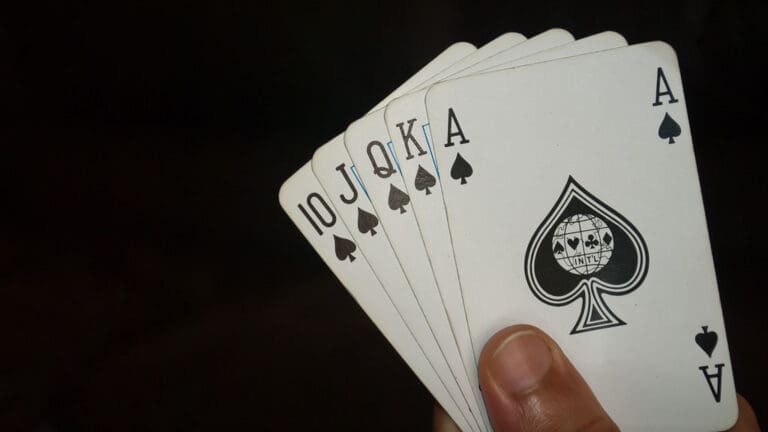Understanding Poker Hands
Poker, a game of skill, strategy, and a little bit of luck, revolves largely around the understanding and knowledge of poker hands. This section will lay the groundwork for understanding the basics of poker hands and illustrate why knowing them is crucial for any poker enthusiast.
The Basics of Poker Hands
In poker, a hand refers to the best five cards that a player can use. These cards can come from a player’s own two-hole cards and the five community cards dealt in the middle of the poker table. The combination of these cards determines the strength of a player’s hand.
Poker hands are ranked based on their rarity. The rarer the combination of cards, the stronger the hand. The hands range from the high card, which is the lowest ranking hand, to the royal flush, which is the highest. You can check the complete list of poker hand rankings for a detailed breakdown.
The Importance of Knowing Poker Hands
Knowing poker hands is the foundation of the game. The strength of a player’s hand determines their actions during a game, be it calling, raising, or folding. It influences how they strategize, react to opponents, and estimate their chances of winning.
Having a firm grasp of the poker hands and their rankings allows a player to make informed decisions about whether to stay in the game or fold. It also aids in understanding the potential hands an opponent might have, which can play a key role in winning a game.
Additionally, understanding poker hands is essential when using a ‘poker hand cheat sheet’ – a tool that provides a quick reference for poker hand rankings. This cheat sheet can be especially useful for beginners who are still familiarizing themselves with the game.
In conclusion, whether a person is playing poker for fun or aiming to become a professional player, understanding poker hands is a fundamental part of the game. By knowing what constitutes the best poker hands, a player can significantly increase their chances of claiming victory at the poker table and walking away with the pot.
Poker Hand Rankings
At the heart of any guide to winning at poker is a thorough understanding of poker hand rankings. These rankings dictate which combinations of cards are the most valuable during gameplay. From high card to royal flush, this section provides a comprehensive overview of poker hand rankings.
High Card
The high card is the lowest rank in poker. When no player has a pair or better, the hand with the highest card wins. The cards are ranked from Ace (highest) down to 2 (lowest).
 3♠️ | 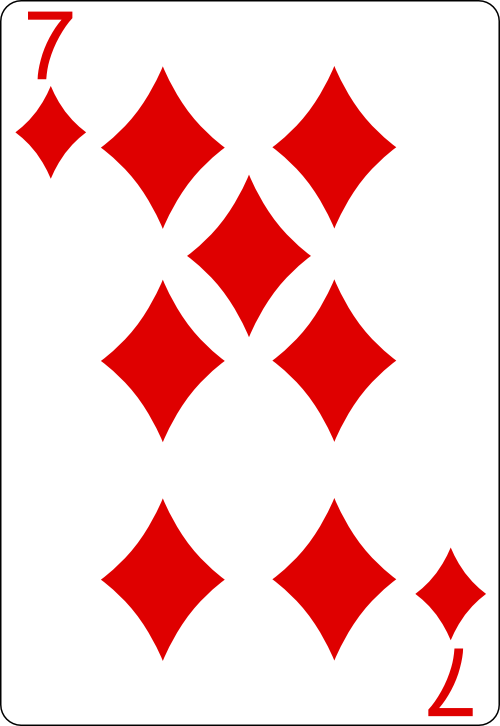 7♦️ |    10♣️ |   K♠️ | 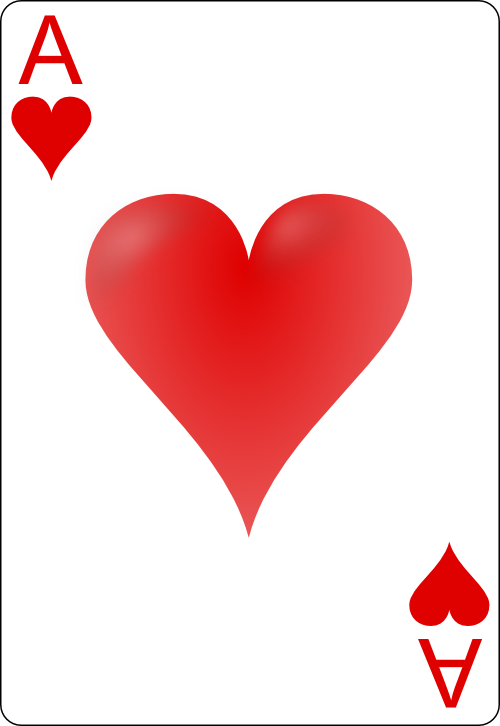    A♥️ |
One Pair
One pair consists of two cards of the same rank, and three unrelated cards. For example, two Tens and any three other cards make up a pair. If two players have the same pair, the player with the highest of the three unrelated cards wins.
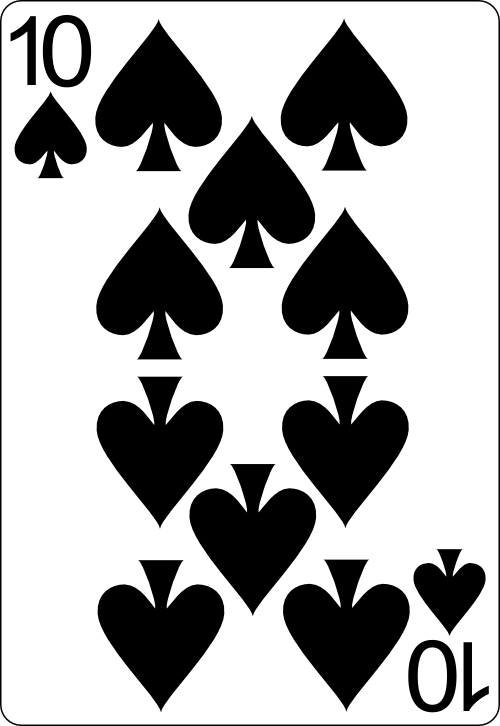  10♠️ |     10♦️ |     4♣️ |     5♠️ | 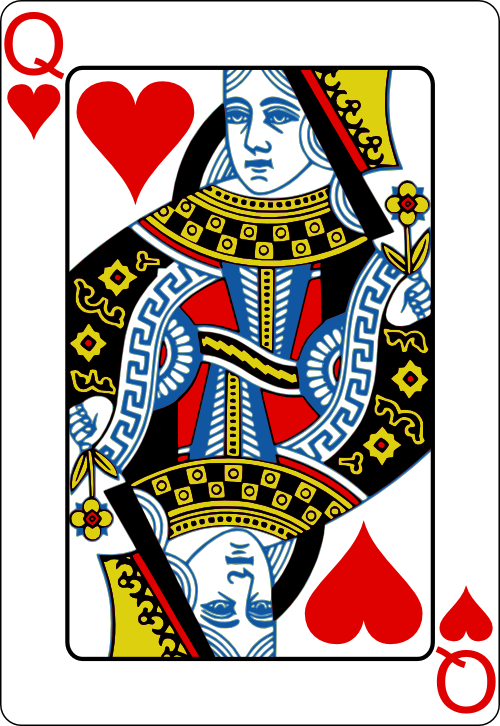  Q♥️ |
Two Pair
Two pair means a player holds two different pairs of cards plus one unrelated card. If two players have two pairs, the player with the highest pair wins. If both top pairs are equal, the second pair or the unrelated card (also called the ‘kicker’) decides the winner.
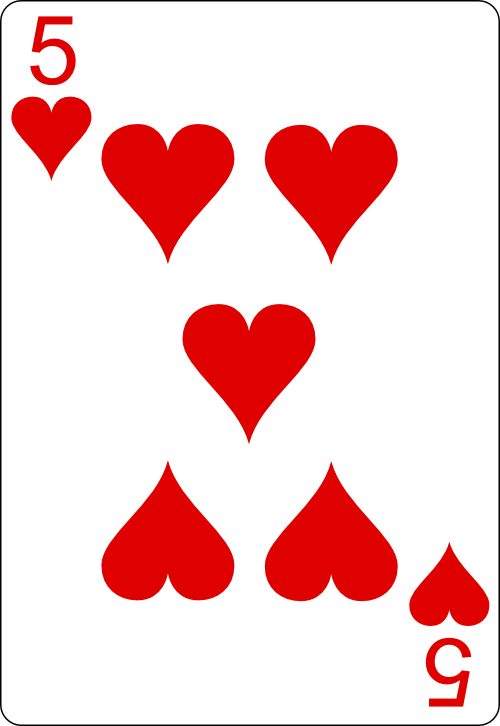  5♥️ |     5♠️ | 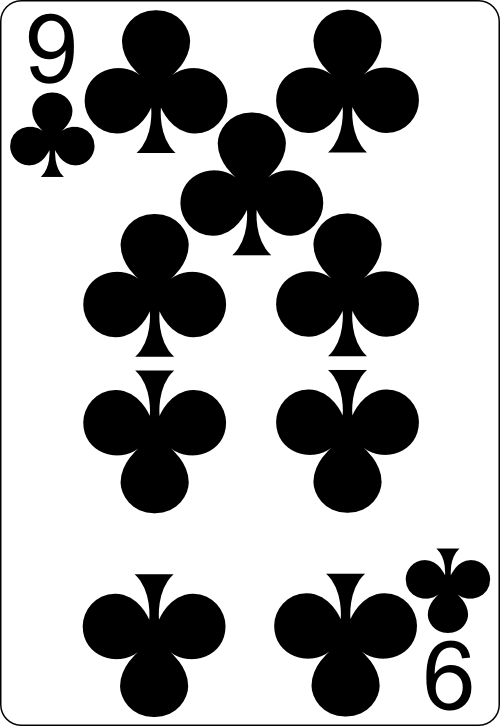   9♣️ | 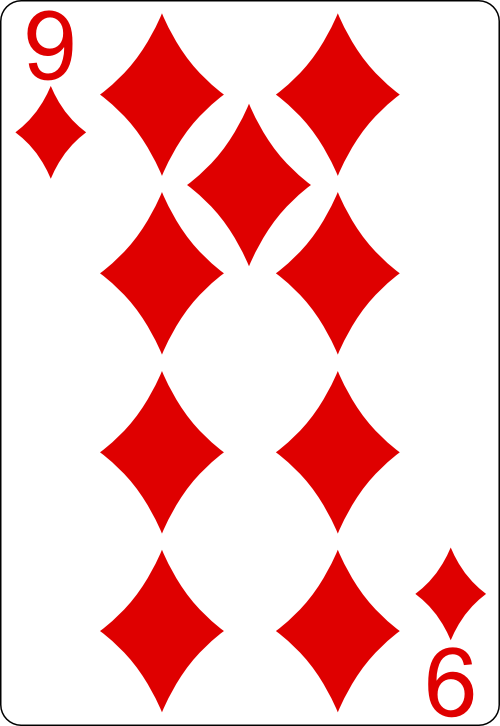  9♦️ |    K♦️ |
Three of a Kind
Three of a kind includes three cards of the same rank and two unrelated cards. If two players have the same three of a kind, the highest unrelated card or the second highest unrelated card (if necessary) decides the winner.
   7♦️ | 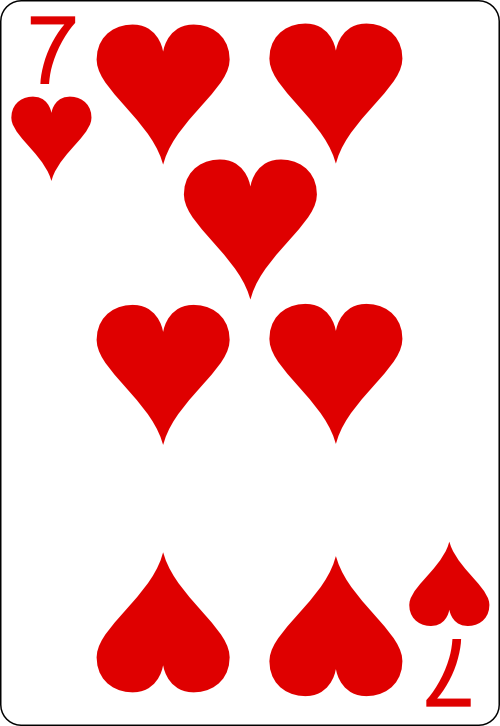  7♥️ | 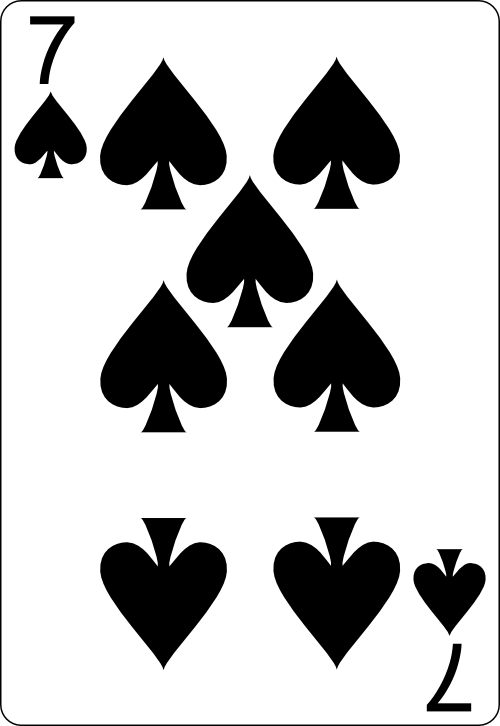   7♠️ |   K♥️ |    9♣️ |
Straight
A straight consists of five consecutive cards of any suit. The Ace can either be high (following a King) or low (preceding a 2), but a straight cannot wrap around (e.g., Q, K, A, 2, 3 is not a valid straight).
   10♣️ |    J♦️ |   Q♠️ | 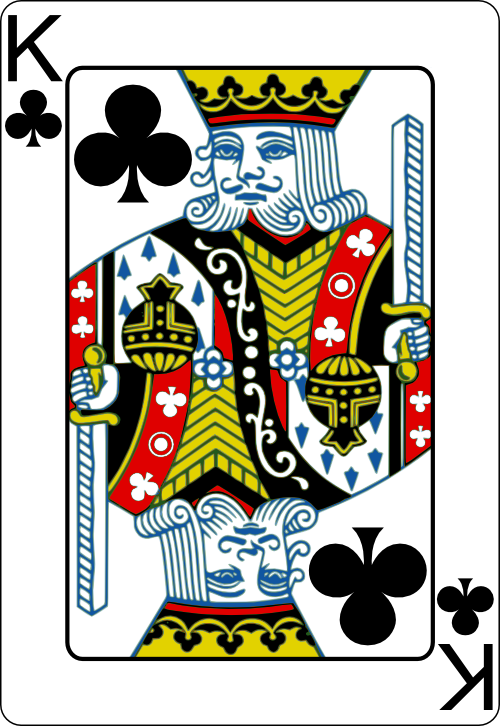  K♣️ |     A♥️ |
Flush
A flush is composed of five cards of the same suit, not in sequence. If two players have a flush, the player with the highest card wins. If the highest card is the same, the second, third, fourth, or even fifth highest card can decide the winner.
  5♦️ | 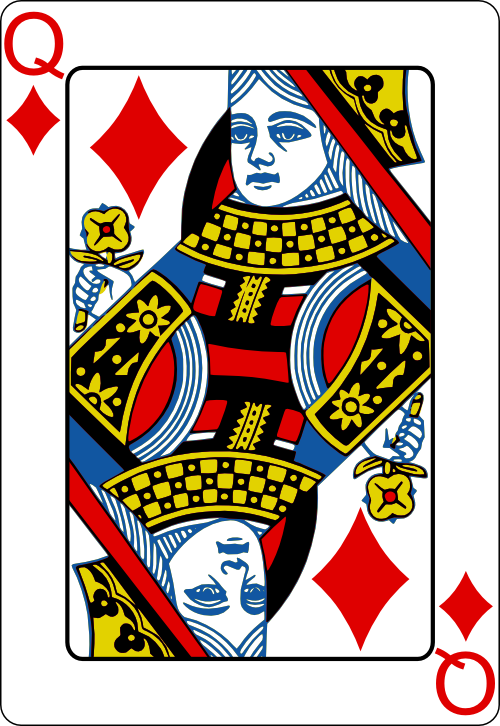   Q♦️ |   3♦️ |     10♦️ |     A♦️ |
Full House
A full house includes a set of three cards of the same rank and a pair of another rank. If two players have a full house, the player with the highest three of a kind wins.
  A♣️ |     A♦️ |     A♥️ |     4♣️ |    4♦️ |
Four of a Kind
Four of a kind, also known as ‘quads’, includes four cards of the same rank and one unrelated card. If two players have four of a kind, the highest four of a kind wins. If they are equal, the highest unrelated card decides the winner.
  4♠️ |     4♣ |   4♥️ |    4♦️ | 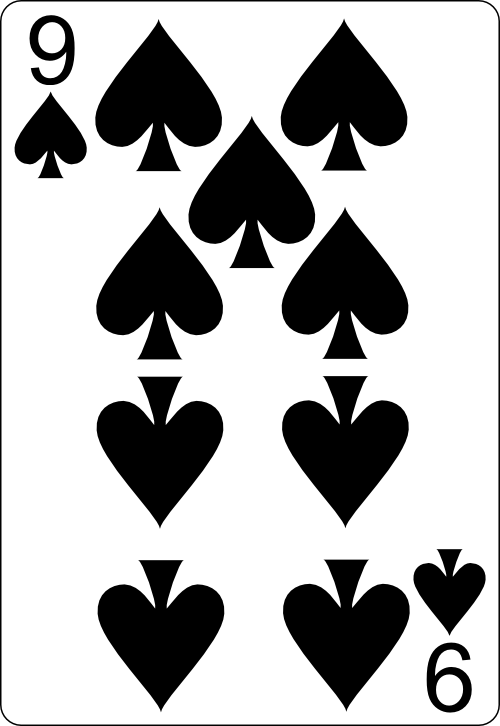   9♠️ |
Straight Flush
A straight flush contains five consecutive cards of the same suit. The player with the highest ranking card at the top of the sequence wins in case of a tie.
    5♠️ |   6♠️ |    7♠️ | 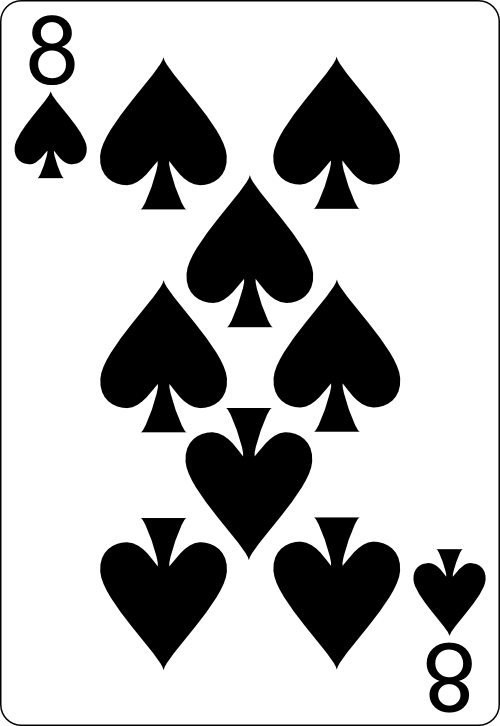  8♠️ |    9♠️ |
Royal Flush
The royal flush is the highest poker hand possible. This hand includes the cards 10, Jack, Queen, King, and Ace, all of the same suit. A royal flush cannot be beaten.
    A♦️ |    K♦️ |    Q♦️ |    J♦️ |     10♦️ |
By understanding these poker hand rankings, players can make informed decisions during gameplay and increase their chances of having the best poker hands. For more information on poker hands, refer to our poker hand cheat sheet.
Exploring the Poker Hand Cheat Sheet
Having a clear understanding of poker hands is crucial for any poker player. A poker hand cheat sheet can be an essential tool in helping players quickly identify the strength of their hand and make informed decisions during gameplay.
How to Use the Cheat Sheet
A poker hand cheat sheet is a concise guide that lists all possible poker hands, ranked from the highest to the lowest. The cheat sheet can be used during gameplay to quickly identify the hand one is holding and its strength compared to potential hands opponents might have.
Here’s a example of a poker hand cheat sheet:
| Hand | Description |
|---|---|
| Royal Flush | Ten, Jack, Queen, King, Ace, all of the same suit |
| Straight Flush | Five consecutive cards of the same suit |
| Four of a Kind | Four cards of the same rank |
| Full House | Three of a kind and a pair |
| Flush | Five cards of the same suit, not in sequence |
| Straight | Five consecutive cards of different suits |
| Three of a Kind | Three cards of the same rank |
| Two Pair | Two different pairs |
| One Pair | Two cards of the same rank |
| High Card | No other hand achieved, highest card wins |
During a game, if you’re unsure about the strength of your hand, simply refer to the cheat sheet. Start from the top and move down until you find the hand that matches your cards. The higher your hand is on the list, the stronger it is. For a more detailed breakdown of poker hand rankings, visit our article on poker hand rankings.
Tips for Memorizing Poker Hands
While a poker hand cheat sheet can be quite useful, the ultimate goal should be to memorize the poker hand rankings. This will enable quicker decision-making and a smoother game flow. Here are some tips to help with memorization:
- Use the cheat sheet: Initially, use the cheat sheet during your games. This will provide constant exposure and help reinforce your memory of the rankings.
- Practice with flashcards: Create flashcards with the name of the hand on one side and its rank and description on the other. Regularly practicing with these can help you quickly recall the rankings.
- Play games: The more you play, the more familiar you’ll become with the hand rankings. Try to identify your hand and its strength as quickly as possible during each game.
- Visualize the hands: Visualize each hand and its rank. Picture the cards in your mind and repeat the hand’s name and rank.
- Teach someone else: The act of teaching or explaining the hand rankings to someone else can help reinforce your own understanding and recall.
Remember, becoming proficient at poker takes time and practice. The more you play, the less you’ll need to rely on the poker hand cheat sheet, and the quicker you’ll be able to make decisions during gameplay. For more information on the best poker hands to aim for, check out our article on best poker hands.
Common Mistakes and Misconceptions
While understanding the poker hand rankings is crucial, it’s equally important to be aware of common mistakes and misconceptions that can affect your gameplay. These include misreading your hand, overvaluing certain hands, and ignoring position and table dynamics.
Misreading Your Hand
One of the most common mistakes made by poker players, especially beginners, is misreading their hand. This usually happens when a player mistakenly believes they have a stronger hand than they actually do. For instance, confusing a flush with a straight or miscounting the number of cards needed for a straight flush can lead to disastrous results.
To avoid this mistake, it’s recommended to frequently refer to a ‘poker hand cheat sheet’ until you’re comfortable with recognizing the different hand rankings. Regular practice and experience will also help improve your ability to accurately read your hand.
Overvaluing Certain Hands
Another common mistake is overvaluing certain poker hands. Some players might place too much value on hands like Ace-King or pocket Jacks, believing they are stronger than they actually are. While these are decent starting hands, they don’t guarantee a win and should be played carefully based on the game’s context.
Remember, the value of your hand can change significantly as the game progresses and more community cards are revealed. Always consider the best possible poker hands based on the community cards and adjust your playing strategy accordingly.
Ignoring Position and Table Dynamics
The third common mistake is ignoring position and table dynamics. In poker, your position at the table can greatly influence your strategy and the potential outcome of the game. Players who act last have the advantage of seeing how others react before they make their move. This information can be invaluable in determining your best course of action.
Table dynamics, or the playing styles and patterns of your opponents, should also not be overlooked. If you’re playing against aggressive players, for instance, you might want to play more cautiously, while a table of passive players may call for a more aggressive strategy.
Ignoring these factors can lead to missed opportunities and costly mistakes. To increase your chances of having winning poker hands, always consider your table position and the dynamics of your opponents when making your decisions.
Strategies for Winning Poker Hands
A solid understanding of the poker hand rankings is just the beginning. To truly excel in the game of poker, one must master certain strategies. This includes understanding the importance of position, grasping the concept of pot odds, accurately reading an opponent’s hand, and knowing when to fold.
Importance of Position
In poker, the position refers to where a player is seated in relation to the dealer. The later a player acts in a round, the more information they have about the other players’ actions. This is a significant advantage as it allows the player to make more informed decisions. For example, if everyone before them folds, they can play a wider range of hands. Conversely, if several players have called or raised, they would need a stronger hand to play.
Understanding Pot Odds
Pot odds are a crucial aspect of poker strategy. Essentially, they are the ratio of the current size of the pot to the cost of a contemplated call. This helps players determine whether a call is profitable in the long run. If the odds of completing a drawing hand are greater than the pot odds, it’s profitable to make the call. Otherwise, it’s best to fold.
Here’s a simple table to illustrate pot odds:
| Odds | Percentage |
|---|---|
| 2 to 1 | 33.3% |
| 3 to 1 | 25% |
| 4 to 1 | 20% |
| 5 to 1 | 16.7% |
Reading Opponent’s Hands
Reading an opponent’s hand is an invaluable skill in poker. This involves observing their betting patterns, body language, and other subtle cues to determine the strength of their hand. For example, a player who bets aggressively might have a strong hand, while one who hesitates before calling might be unsure about their hand strength. Remember, however, that experienced players can use these cues to mislead their opponents, so it’s essential to continually adjust based on new information.
Knowing When to Fold
Even the best poker hands can turn into losing hands if played incorrectly. Knowing when to fold is just as important as knowing when to bet or raise. If the odds are against you, or if you’re sure that an opponent has a stronger hand, it’s often better to fold and save your chips for a better opportunity.
Mastering these strategies can significantly improve your poker game. Remember, poker is a game of skill and strategy as much as it is a game of chance, and even the most comprehensive poker hand cheat sheet can’t replace strategic thinking and experience. Keep practicing, keep learning, and may you always have the winning poker hands.

